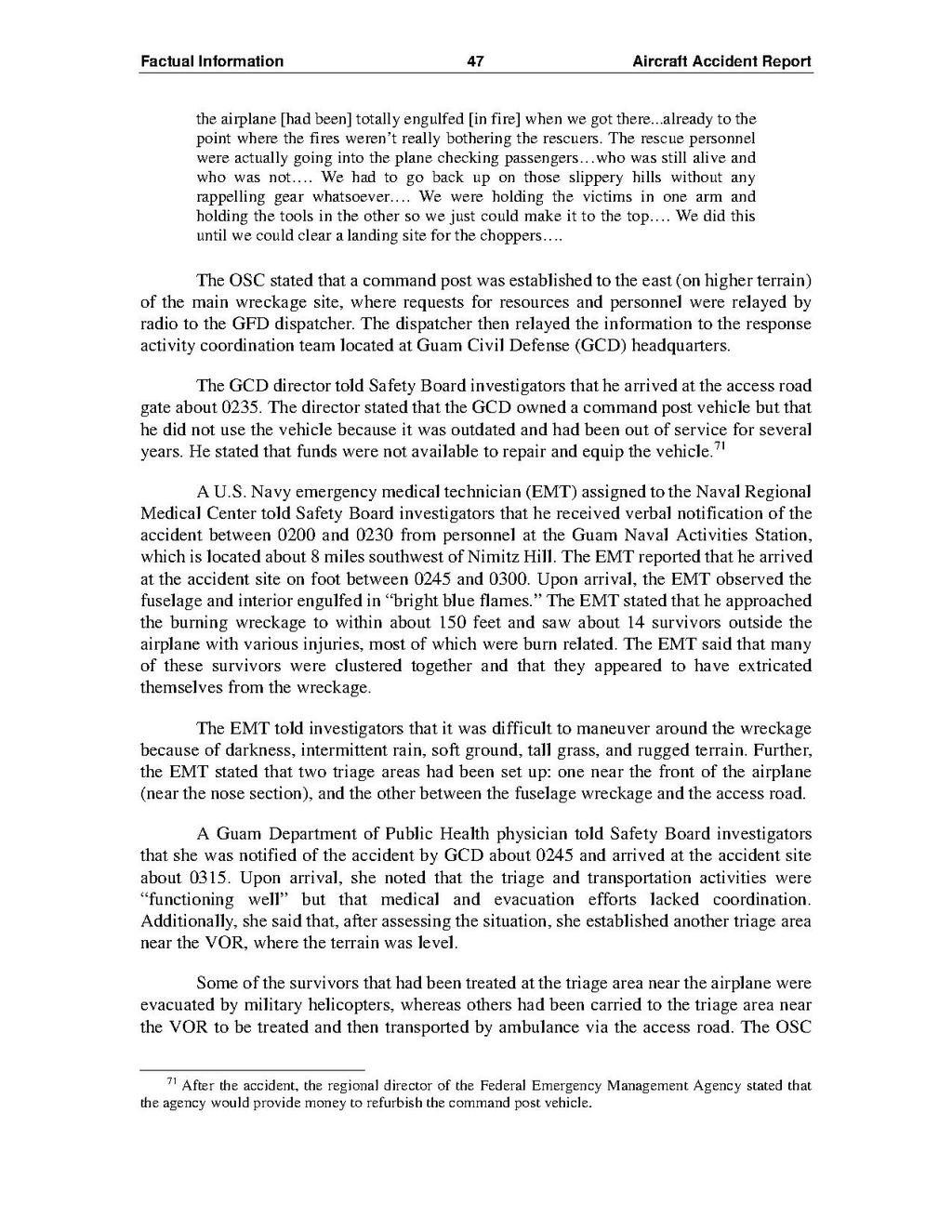- the airplane [had been] totally engulfed [in fire] when we got there...already to the point where the fires weren't really bothering the rescuers. The rescue personnel were actually going into the plane checking passengers...who was still alive and who was not.... We had to go back up on those slippery hills without any rappelling gear whatsoever.... We were holding the victims in one arm and holding the tools in the other so we just could make it to the top.... We did this until we could clear a landing site for the choppers....
The OSC stated that a command post was established to the east (on higher terrain) of the main wreckage site, where requests for resources and personnel were relayed by radio to the GFD dispatcher. The dispatcher then relayed the information to the response activity coordination team located at Guam Civil Defense (GCD) headquarters.
The GCD director told Safety Board investigators that he arrived at the access road gate about 0235. The director stated that the GCD owned a command post vehicle but that he did not use the vehicle because it was outdated and had been out of service for several years. He stated that funds were not available to repair and equip the vehicle.[1]
A U.S. Navy emergency medical technician (EMT) assigned to the Naval Regional Medical Center told Safety Board investigators that he received verbal notification of the accident between 0200 and 0230 from personnel at the Guam Naval Activities Station, which is located about 8 miles southwest of Nimitz Hill. The EMT reported that he arrived at the accident site on foot between 0245 and 0300. Upon arrival, the EMT observed the fuselage and interior engulfed in "bright blue flames." The EMT stated that he approached the burning wreckage to within about 150 feet and saw about 14 survivors outside the airplane with various injuries, most of which were burn related. The EMT said that many of these survivors were clustered together and that they appeared to have extricated themselves from the wreckage.
The EMT told investigators that it was difficult to maneuver around the wreckage because of darkness, intermittent rain, soft ground, tall grass, and rugged terrain. Further, the EMT stated that two triage areas had been set up: one near the front of the airplane (near the nose section), and the other between the fuselage wreckage and the access road.
A Guam Department of Public Health physician told Safety Board investigators that she was notified of the accident by GCD about 0245 and arrived at the accident site about 0315. Upon arrival, she noted that the triage and transportation activities were "functioning well" but that medical and evacuation efforts lacked coordination. Additionally, she said that, after assessing the situation, she established another triage area near the VOR, where the terrain was level.
Some of the survivors that had been treated at the triage area near the airplane were evacuated by military helicopters, whereas others had been carried to the triage area near the VOR to be treated and then transported by ambulance via the access road. The OSC
- ↑ After the accident, the regional director of the Federal Emergency Management Agency stated that the agency would provide money to refurbish the command post vehicle.
